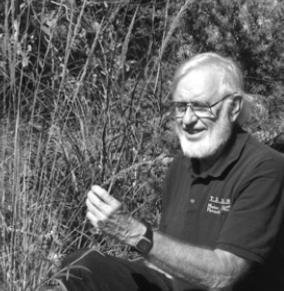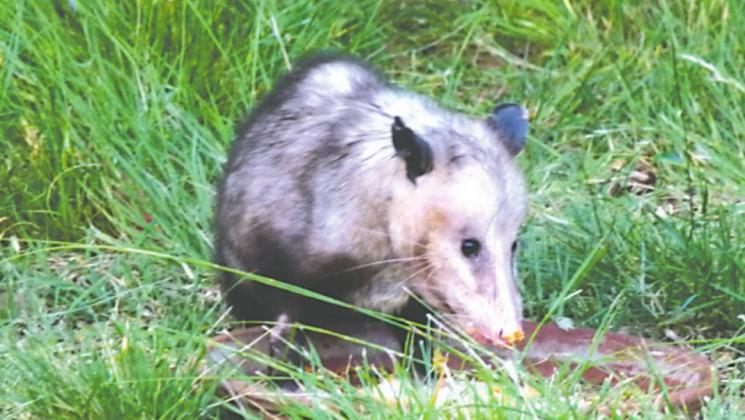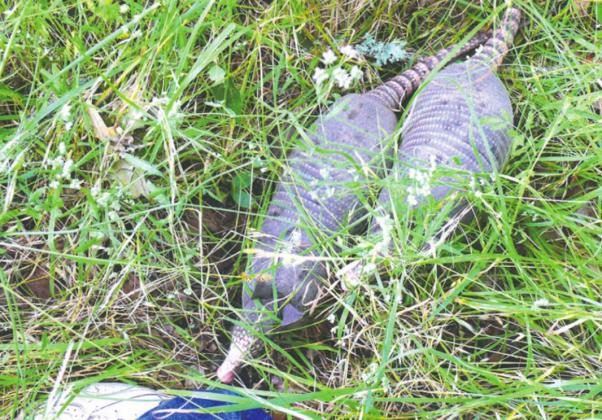Two Common, but Unusual, Hill Country Mammals
Two weeks ago, I discussed two of the most common Hill Country mammals, raccoons and skunks. Today I want to discuss two of the more unusual mammals, armadillos and opossums.
The Nine-Banded Armadillo (Dasypus novemcinctus) certainly needs no description from me; everyone easily recognizes these little critters. They are the only North American animal with heavy bony plates (large shields over shoulders and rump, and nine bands in between). They have four toes in front and five in back, all with very large, strong claws for digging. On average, they are about 18” long and weigh about 12-15 pounds.
The armadillo’s main diet is insects and invertebrates which they usually find by sniffing and digging, but they will take advantage of carrion, if they find it, as well as ground nesting bird’s eggs. In summer, they are most active at night, but in winter, they may be more active during the day.
Their reproductive process is unusual. They mate in midsummer, but implantation does not occur until October or November. And the young are born in March. The other unusual aspect of their reproduction is that usually four identical quadruplets are born, fully formed, eyes open, able to walk.
While armadillos can inflate their bodies to float on water and swim, they can also decide to sink and walk across the bottom of streams and ponds.
During the last century, armadillos expanded their range from South Texas east to Louisiana and north throughout most of the rest of Texas, except for extreme West Texas. Their range is limited by climate (they can’t survive long freezing spells), availability of soft dirt for digging out food, and the need to drink water every day. Their numbers are actually declining in recent years for reasons that are somewhat uncertain but may be partly due to people taking them to make articles from the shells and partly due to the increase in feral hogs which prey on their young. The armadillo is the official Texas state small mammal.
The Virginia Opossum (Didelphis virginiana) is another common Hill Country mammal with unusual characteristics. They are the only North American marsupial (raise their young in a pouch like a kangaroo). Their tail is prehensile (can grip things like a monkey) and they have opposable thumbs on their hind feet, both of which allow them to climb trees. All of the possums I have seen in this area have been the grayish phase, but there is a dark phase that is nearly black, which is more common in South Texas. Opossums inhabit all of the state except the driest parts of West Texas.
Possums are about the size of a house cat, with a whitish face, black ears, pink toes and a bare, scaly tail. They are nocturnal but will venture out in daylight during the winter. They are more common in wooded areas, particularly along riparian areas, than on open grasslands.
The young are born after only about 2 weeks gestation and move to the mother’s pouch where they attach themselves to a nipple. At this point the young are about the size of honey bees and a half dozen can fit in a teaspoon. The mother can accommodate up to 13 babies in her pouch, but sometimes she bears more than that so some do not survive. The young remain in the pouch for up to two months. After that, the young may cling to the mother’s back as she moves around until they are somewhat older.
Opossums are believed to be among the oldest, most primitive mammals in the New World and are believed to have been mostly unchanged for 50 million years. They have 50 peg-like teeth (the most of any mammal) and their skull has a bony ridge along the top somewhat similar to some dinosaurs.
Opossums will eat just about anything they can find: insects, seeds, berries, fruit, bird eggs, fish, frogs, small mammals and carrion. They are particularly fond of sunflower seeds and even thistle seeds that people put out to feed birds.
They can be aggressive in their defense if threatened, but if they think this tactic won’t work, they can “play possum” in which they roll over and “play dead” with their eyes closed and their mouth open with their tongue hanging out.
Until next time…
Jim Stanley is a Texas Master Naturalist and the author of the books “Hill Country Ecology,” “Hill Country Landowner’s Guide” and “A Beginner’s Handbook for Rural Texas Landowners.” He can be reached at <jstmn@ktc.com>. Previous columns can be seen at <www. hillcountrynaturalist.org>.



